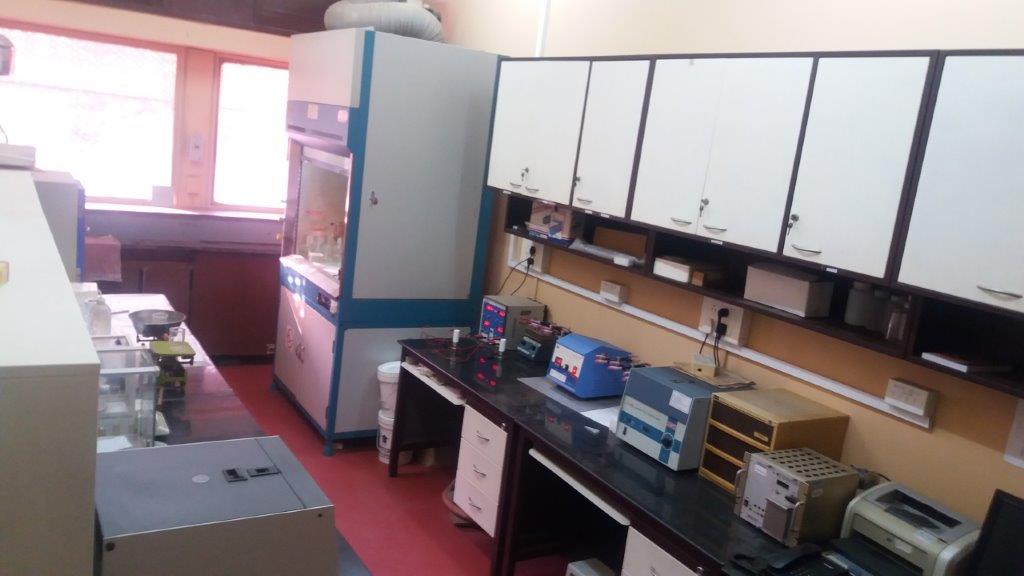

Development of radiation detection systems, methodologies, calibration techniques for systems, Radiological Impact Assessment (RIA) for waste disposal and discharge activities of DAE facilities through atmospheric and aquatic routes, meteorological and hydrological data collection, development and application of models to simulate fate of released radionuclides in atmospheric and aquatic system,
In-vivo and in-vitro monitoring of suspected internal radioactive contamination (actinides, fission and activation products, radiopharmaceuticals) & assessment of internal radiation dose to radiation workers and members of the public; Analysis of tritium, 14C, high energy beta and alpha emitters in biological and environmental samples; Studies on biokinetic behaviour of radionuclides; Nuclear forensic measurements.
Development of 25 Radiation Emergency Response centres all over the country for response to Radiological Emergencies.
An android based image analysis application has been developed to convert smartphone camera into a gamma radiation monitor. The developed application is ideal for use by first responders to detect suspected orphan sources/dirty bombs in the absence of specialized radiation detectors. Since the CMOS camera in a smartphone is sensitive to ionizing radiation, when the visible light is blocked from reaching the camera, the interaction of gamma rays with camera pixels produces bright spots in the image. These bright spots in the captured image are analyzed and correlated to the radiation exposure level.
Backpack Gamma Spectrometry System (BGSS) has been developed to search, locate and identify orphan/lost radioactive sources in public domain without drawing the attention of the people. Radiation detection unit is packed in a backpack and the acquired gamma spectrum is communicated to a smart phone over Bluetooth. Android application in the smart phone analyses the spectrum for the presence of radioactive source and for the identification of the isotope. Smart phone gives the vibration alarm upon detecting a radioactive source.
The Numerical Weather Prediction (NWP) models, such as The Air Pollution Model (TAPM) and Weather Research and Forecasting (WRF) model are extensively used for flow field simulation studies, including cyclone simulation (WRF). Typical flow field simulation using WRF model for Trombay site is shown in the Figures for two different atmospheric stability conditions, and for the simulation of cyclone NISARGA.
These are deployed at all the exit points and around nuclear facilities to monitor any abnormal increase in the radiation level and to detect any attempt of unauthorized trafficking of the radioactive sources from the facility leading to increase in background radiation level
In order to carryout Radiological Impact Assessment (RIA) of radionuclide leaching from Near Surface Disposal Facility (NSDF) or tailings pond at mining site, ground water modelling studies are carried out using in-house developed codes as well as state-of-the art numerical models. The results of one of the study carried out for tailings pond at Turamdih, Jharkhand
Quad-rotor based Aerial Radiation Monitoring System (QARMS) has been developed for the quick assessment of radioactive contamination or search and locate orphan/lost radioactive source over a small inaccessible area. It can be quickly deployed and operated with minimum effort and no radiation exposure. QARMS consists of a flying unit and a ground control station. Flying unit consists of quad rotor, GM counter based radiation detection unit and ZigBee based communication device. The ground control station is a PC installed with mission planner software to control the movement of quad rotor and analysis the radiation data.
Various systems and methodologies are developed for responding to any nuclear / radiological emergencies e.g. - aerial, land route monitoring methodology, any abnormal increase in radiation level at the site, meteorological parameters etc.

 2014-09-09/2031-12-31
2014-09-09/2031-12-31Facilities for the radio chemical separation and processing of samples for measurements in various spectrometry systems.
Integrated Center for Crisis Management (ICCM) would provide Radiation Emergency Preparedness and Response during Radiation Emergency events/scenarios and integration with response / procedures for Conventional, Chemical, Biological emergencies and Security threats at BARC, Trombay site. The response can also be assisted by Local, National and International Authorities if need arises with coordination effected through Crisis Management Group (CMG), Department of Atomic Energy (DAE), OYC, Mumbai.
A mobie laboratory equipped with the state of the art systems / instruments which can be deployed during radiological / nuclear emergency. This laboratory has the capability to record the doserates, spectrum along with the positional coordinates. This data helps to assess the radiological status of the affected site.
These 25 DAE-Emergency Response Centres are developed to response to any radiological emergency in the public domain. These centres are equipped with trained man power, response gadgets and personal protective response kits etc. These centres are located in DAE facilities around the country.
The Radiation Monitoring Watch (RMW) is a GM tube based, lightweight, compact, and ultra low power gamma radiation monitoring gadget in the form factor of a wrist watch. It indicates the prevailing dose rate, accumulated dose and current date & time. RMW is an ideal device for the first responders attending to an emergency or disaster to rule out the presence of a radiological event and can also assist the Emergency Response Personnel during the management of a radiological emergency. It is powered by a replaceable commercially available coin cell, capable enough for more than six months of continuous operation in background radiation. RMW alerts the user with an audible alarm when the dose rate exceeds the threshold.